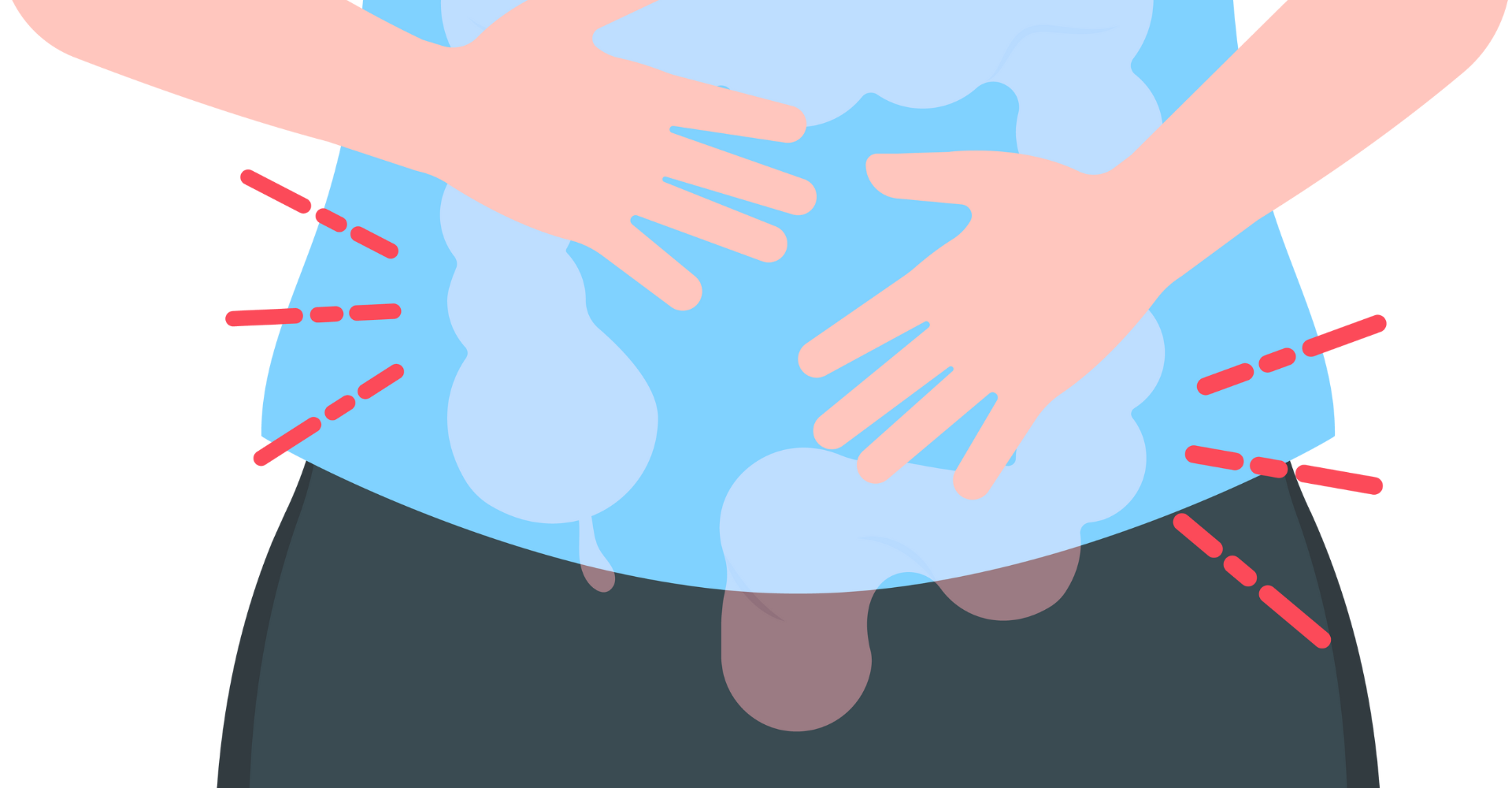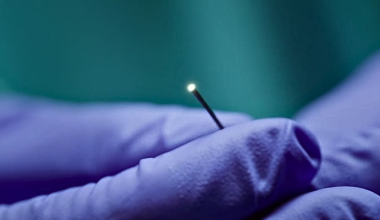Hernia repair is the third most commonly performed surgical procedure in Canada, with about 50,000 hernia repairs being performed yearly.
A hernia happens when one of your organs pushes through the muscle or tissue that contains it, usually appearing in your abdomen or groin. It may look like an odd bulge that comes and goes during different activities or in different positions. It may cause symptoms, such as discomfort or pain or you might have no pain at all.
Unfortunately, hernias don’t go away on their own. Only surgery can repair a hernia. Many people can delay surgery for months or even years. And some people may never need surgery for a small hernia.
Types of Hernia
Groin hernias
Groin hernias (also known as an inguinal hernia) are a common problem, with around one in three Canadian men experiencing them over their lifetimes. Males account for about 90 per cent of all inguinal hernias and females about 10 per cent.
A groin hernia can appear at any age. Infants may be born with one that doesn’t show up until they become adults. About five out of every 100 children are born with the condition and will require surgery to repair. Adults can take the “wait and see” approach in collaboration with their doctor.
Umbilical hernia
An umbilical hernia occurs when a loop of intestine pushes through the belly button. Twenty per cent of babies are born with umbilical hernias with ninety per cent naturally closing by the time the child reaches five years of age. While 30 to 50 per cent of the general population has an umbilical hernia, only 15 per cent will undergo surgery.
Incisional hernia
Affecting about one third of patients after abdominal surgery, an incisional hernia occurs at or near a surgical incision, allowing intestine, organ or other tissues to protrude. Roughly 10 to 15 per cent of people who have a surgical abdominal incision will get a hernia.
Abdominal (Ventral) hernia
Occurring in approximately one in five adults, an abdominal hernia occurs when intestines or other tissues protrude through a weakness or gap in the abdominal wall.
Hiatal hernia
A hiatal hernia occurs when the upper part of the stomach pushes up into the chest through a small opening in the diaphragm. Hiatal hernias affect about 20 per cent of the population.
Hernia Treatments
Depending on the severity of your hernia, treatment may involve waiting and seeing. Many hernias have no symptoms or symptoms that can be managed with lifestyle changes and medication.
However, if you are encountering dangerous symptoms such as a hernia bulge that is suddenly larger than before, or you begin experiencing pain related to your hernia that worsens with time or interferes with your daily life, surgical repair may be required.
Call your doctor if your hernia symptoms get worse, or go to the ER right away if:
- You have a painful bulge that can’t be pushed back inside.
- You have increasing pain, swelling, or redness.
- You have nausea, fever, or vomiting along with hernia pain.
The three main types of hernia surgery are open, laparoscopic and robotic repair. Most of these types use a mesh (or a screen or a patch) to help repair the hernia. While using implants such as mesh to repair hernias has been a life-changer for many, there are risks and downsides with any implant technology.
A globally recognized solution that was invented by the Canadian surgeon Dr. Edward Earle Shouldice involves repair of your muscles using permanent sutures. Ninety-eight per cent of the time, no mesh, patch, or screen is used in the Shouldice technique. Additionally, it is undertaken using intravenous sedation, instead of the typical gas anesthesia.
The result is a faster recovery and a record-setting recurrence rate of less than one per cent (they offer a lifetime guarantee on their inguinal hernia repair), an infection rate of about 0.3 per cent and a very low chronic pain rate. This solution is great for athletes and people who have very labour-driven jobs.
It is important to note that Shouldice only accepts patients for surgery if they satisfy strict weight parameters, along with general health and hernia status criteria. See here for more information.
Cost of Hernia Repair
Medicare will cover hernia surgery, but you could be on a waiting list for a good year or more. If you live in a location with private clinics, they will accept Medicare for medically necessary surgery, but you will still have to wait. Some provinces and territories do not have hernia surgery available so you may be required to travel to another province for treatment. Check with your local health department to see what is covered when you travel for health needs.
If you’re looking for a faster route, you can elect to travel to another province for treatment, however Medicare may only reimburse a portion of the surgery. Additionally, private (for-profit) clinics often offer an elevated experience with regards to food or private or semi-private rooms that will not be reimbursed by Medicare.
Make sure you understand all the costs up front before you proceed including how much you’ll be paying out of pocket and what you can expect as far as reimbursement. Private insurance may be able to cover the rest of your costs, depending on your plan. If you do invest in private care, make sure you take advantage of any tax credits available.
New and Upcoming Hernia Treatments
Advances such as the Shouldice technique and using mesh to repair hernias are global success stories in biomedical engineering that have improved the lives of countless people. But in some cases, hernia surgery can reduce quality of life, with 10 to 15 per cent of patients experiencing pain post-surgery directly related to mesh implantation.
Additionally, hernias – especially ventral hernias – often become chronic and reappear between 40 per cent and 70 per cent of the time five years after surgery according to a 2024 study.
As the public becomes aware of health consequences related to their surgical interventions, the demand for better outcomes and quality of life for hernia patients is increasing.
Robotics
On the scene for more than two decades, robotic surgery is swiftly gaining popularity for use in hernia repair. 3D imaging of the inside of the abdomen enables surgeons to operate through small, minimally invasive incisions rather than the large incisions associated with traditional open surgery.
During the procedure, your surgeon sits at a console and maneuvers the surgical instruments from a console. With less pain and tissue damage, recovery is much quicker and scarring is far less noticeable.
Machine Learning
Another exciting area of development in hernia repair is machine learning. It has been shown to be a promising tool for predicting outcomes and identifying factors that could lead to complications after surgical abdominal hernia repair
Watch below as researchers from University of Texas MD Anderson Cancer Center discuss new machine learning models that can predict the risk of recurrence and other complications resulting from hernia repair with an accuracy of up to 85 per cent.
These models can also help patients and doctors identify lifestyle changes the patient can make before surgery to help with better outcomes.
Non-permanent Mesh
Using mesh or mesh overlap to repair hernias is not the permanent solution it was once considered to be. Doctors are increasingly exploring the use of non-permanent meshes such as bioresorbable mesh and absorbable mesh.
Implantation of these meshes is intended to cause inflammation that strengthens the body’s native tissue and builds scar tissue to reinforce the repair.
The Holistic Approach
With such high recurrence rates, many hernia specialists now recognize that an array of therapeutic and surgical solutions should be used to help sustain quality of life for hernia patients.
As a result, a more holistic, patient-centric movement is being explored using approaches to improve abdominal core health. This new team-based approach helps patients focus on maximizing core muscle strength through exercise, nutrition, and physical therapy.
As of today, there are only a few such clinics in Canada, however this shouldn’t stop you from getting underway with lifestyle changes that can help with your hernia.
6 Things You Can Do to Help Prevent a Hernia or Hernia Recurrence
1.Strengthening the core is now thought to help prevent the recurrence of ventral hernias. Consult with an accredited physiotherapist or your doctor prior to starting with a core strength program as there are some exercises hernia patients should avoid. Watch the video below for more information.
2.Maintaining a healthy body weight is key in managing recurrent hernias. Carrying excess weight puts pressure on your muscles and tissues, increasing risk of recurrence.
Bookmark The Health Insider’s Nutrition Section to stay up to date on advances in Culinary Medicine
3.Choosing healthy foods is a wise decision for overall health, disease prevention and preventing hernia recurrence. Additionally, depending on the type of hernia you have, some foods can aggravate symptoms and should be avoided. The list may include favourites such as dairy products, caffeinated beverages, alcohol, chocolate, and spicy or tomato-based foods. Check with your doctor for more information.
4.It’s not just about what you eat, but also how much. Overeating can not only cause you to gain weight, but it also puts excess strain on abdominal tissues. Plan on eating several smaller meals throughout the day rather than the traditional three meals and have your last bite at least three hours before going to sleep.
5.If you’re a smoker, here’s some more bad news: some research concludes that smokers can be at greater risk for the development of a hernia and recurrence than non-smokers.
6.Use proper lifting techniques and only lift an appropriate amount of weight. Make sure you bend from your knees and lift using your quads with a straight back. Do not bend at the waist when you pick up weight.
With the medical community embracing technology and a more holistic approach, things are looking up for hernia patients. Make sure you subscribe to The Health Insider to stay up to date with advancements in hernia care.
The information provided on TheHealthInsider.ca is for educational purposes only and does not substitute for professional medical advice. TheHealthInsider.ca advises consulting a medical professional or healthcare provider when seeking medical advice, diagnoses, or treatment. To read about our editorial review process click here.










